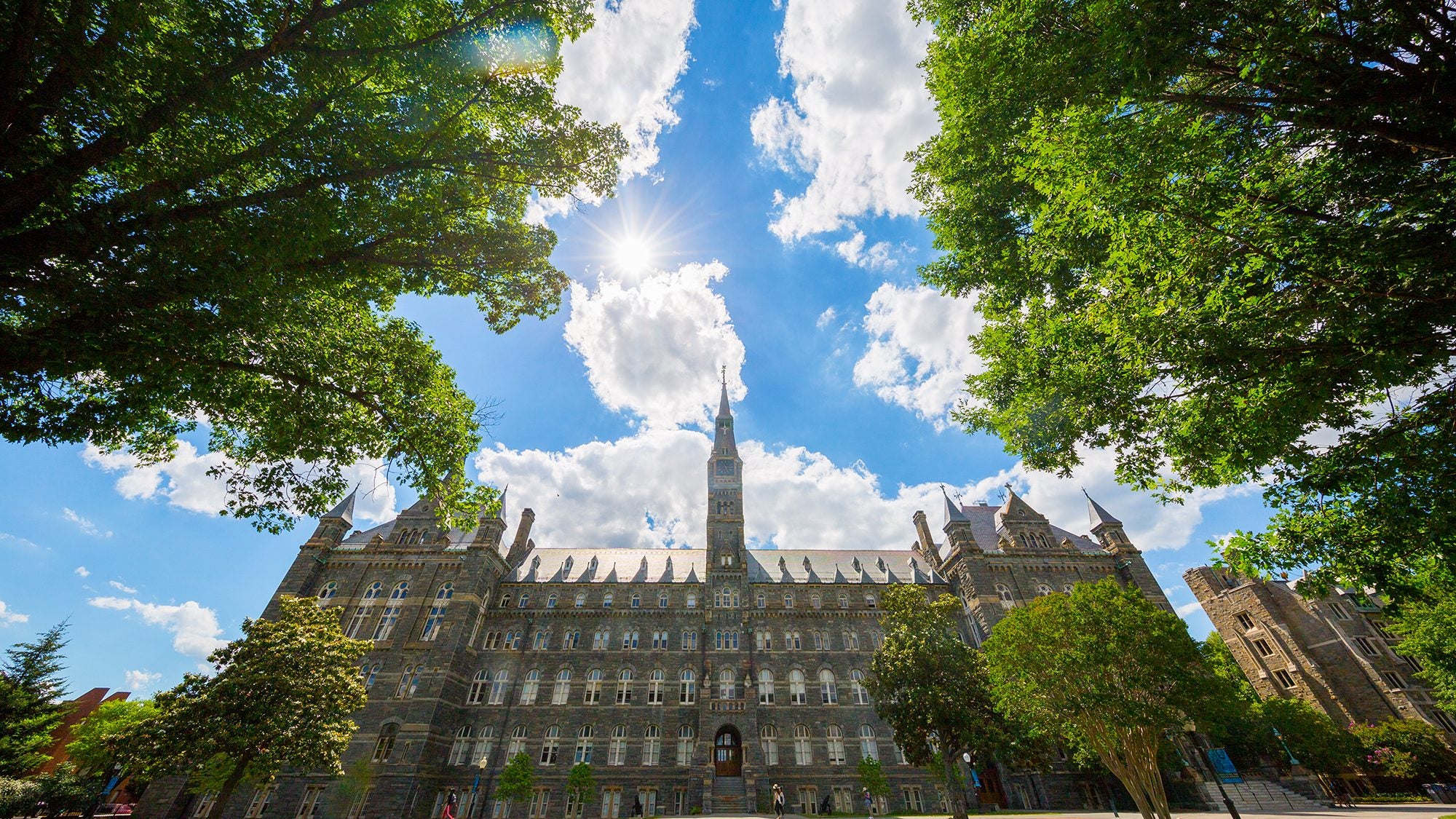The 15-year agreement allows Georgetown to annually buy 100,000 megawatt-hours of electricity from 11 existing solar plants.
The facilities are located in Maryland and New Jersey and are within the PJM, a regional transmission organization that coordinates the movement of wholesale electricity in all or parts of 13 states and the District of Columbia.
“We are very excited to announce this new PPA, a welcome addition to the multi-pronged strategy we are using to achieve our ambitious sustainability goals while supporting the common good and promoting good stewardship,” says Geoff Chatas, the university’s chief operating officer. “Finding a way to provide two-thirds of our electricity needs with significant cost savings to the university is a great step in that direction.”
Long-term Sustainability
Georgetown, whose Office of Sustainability advances the university’s sustainability mission and goals, met its original quest to cut greenhouse gas emissions by 50% six years ahead of its 2020 goal. The university also has purchased Renewable Energy Certificates (RECs) for 100% of its electricity since 2013, when it earned the EPA’s Green Power Partner of the Year Award.
Chatas says the strategy of purchasing power from existing facilities allows the university to reduce long-term electricity costs and support the renewable energy industry in the region.
Georgetown will purchase the energy from the solar facilities without the associated RECs, and through a second financial transaction, purchase Green-e certified RECs through a broker for an equivalent amount of power for the first five of the 15-year agreement.
“As part of our future long-term sustainability strategy, it will also remain important for us to help drive the development of new renewable energy facilities in a fully sustainable way,” Chatas says.
Victoria Boatwright (C’22), president of the student-led Green Renewable Energy and Environmental Network (GREEN) says her organization is “excited to see Georgetown continuing forward in pursuit of reducing our carbon emissions and decreasing our reliance on fossil fuels, and we were especially encouraged by administrators including students in this process.”
“I think this is a great example of the progress that Georgetown can accomplish in pursuing clean energy sourcing and positive environmental impacts through a strong partnership between student organizations and administrators,” she adds.
Meaningful Investments
The agreement is part of a comprehensive set of steps that Georgetown has already made or is in the process of making involving renewable energy, conservation and efficiency.
Georgetown’s previous sustainability efforts have resulted in nearly 1 million square feet of LEED-certified buildings on campus, a commitment to divest from fossil fuel companies over the next 10 years and the installation of solar panels on and off campus.
Educational efforts have included a new, improved environmental studies minor, the McDonough School of Business’ new Certificate in Sustainable Business and numerous courses on climate change through the university’s Core Pathways program.
Students also have access to virtual sustainability resources this fall, including a virtual sustainability walking tour and a Sustainable Remote Living Guide for Students.
“This agreement is yet another step forward in a comprehensive set of commitments that Georgetown has made to ensure a sustainable future consistent with our broader mission of advancing the global common good,” says Peter Marra, director of the Georgetown Environment Initiative and the university’s Laudato Si’ Professor of Biology and the Environment.
